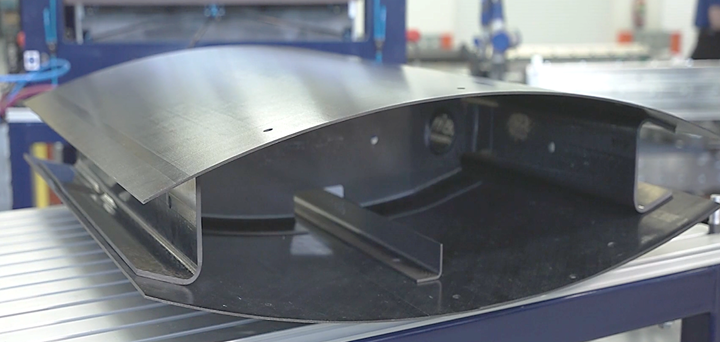KVE INDUCT: Welding a torsion box demonstrator
To meet sustainability targets and market demands, the aerospace industry is searching for alternative joining methods. Automated assembly of thermoplastic composite structures by induction welding offers a solution. (Sponsored)
UD-tape based thermoplastic composites hold a great potential for both meeting sustainability targets and market demands. They allow for fully automated production of parts and can subsequently be joined without the traditional fasteners or adhesive bonding by applying welding technologies.
The induction welding process KVE INDUCT from KVE Composites is a well-established automated assembly process for carbon fabric-based thermoplastic, but welding of UD-tape based thermoplastic still offered some challenges until recently. KVE and Daher Aerospace are working to bring the technology to TRL 6 for UDs. In this digital demo, KVE showcases the technology and explains process fundamentals by welding a torsion box demonstrator.
For more information, please follow KVE on LinkedIn or visit their website.

Related Content
-
Bio-based acrylonitrile for carbon fiber manufacture
The quest for a sustainable source of acrylonitrile for carbon fiber manufacture has made the leap from the lab to the market.
-
Hexagon Purus Westminster: Experience, growth, new developments in hydrogen storage
Hexagon Purus scales production of Type 4 composite tanks, discusses growth, recyclability, sensors and carbon fiber supply and sustainability.
-
Watch: A practical view of sustainability in composites product development
Markus Beer of Forward Engineering addresses definitions of sustainability, how to approach sustainability goals, the role of life cycle analysis (LCA) and social, environmental and governmental driving forces. Watch his “CW Tech Days: Sustainability” presentation.












